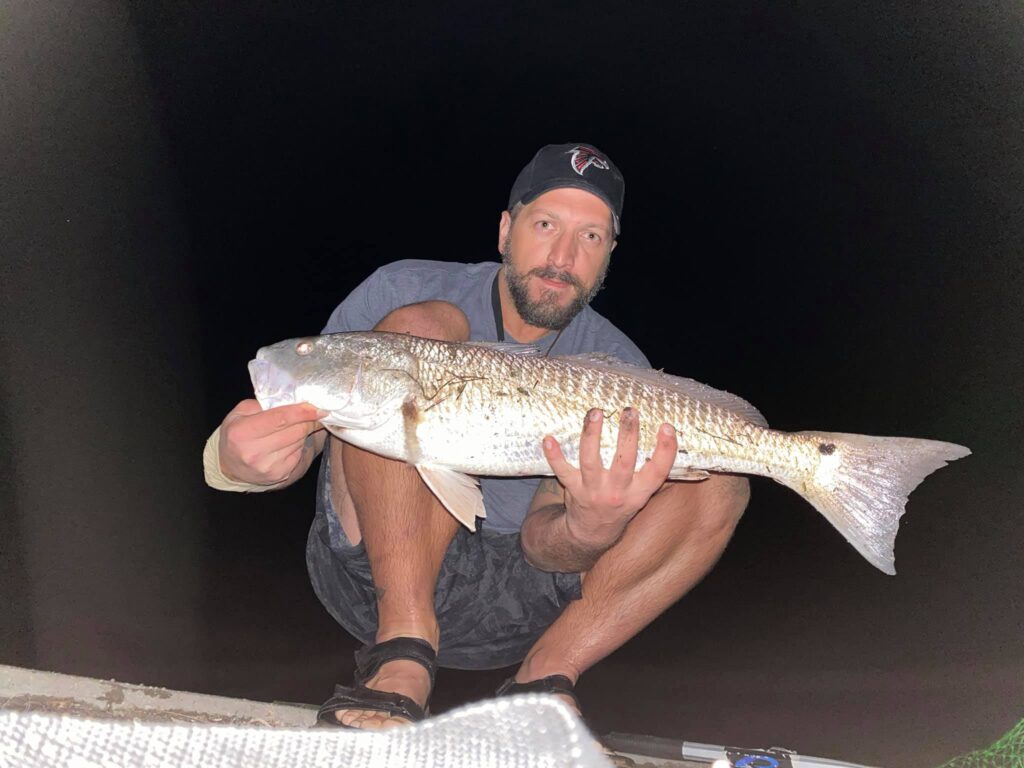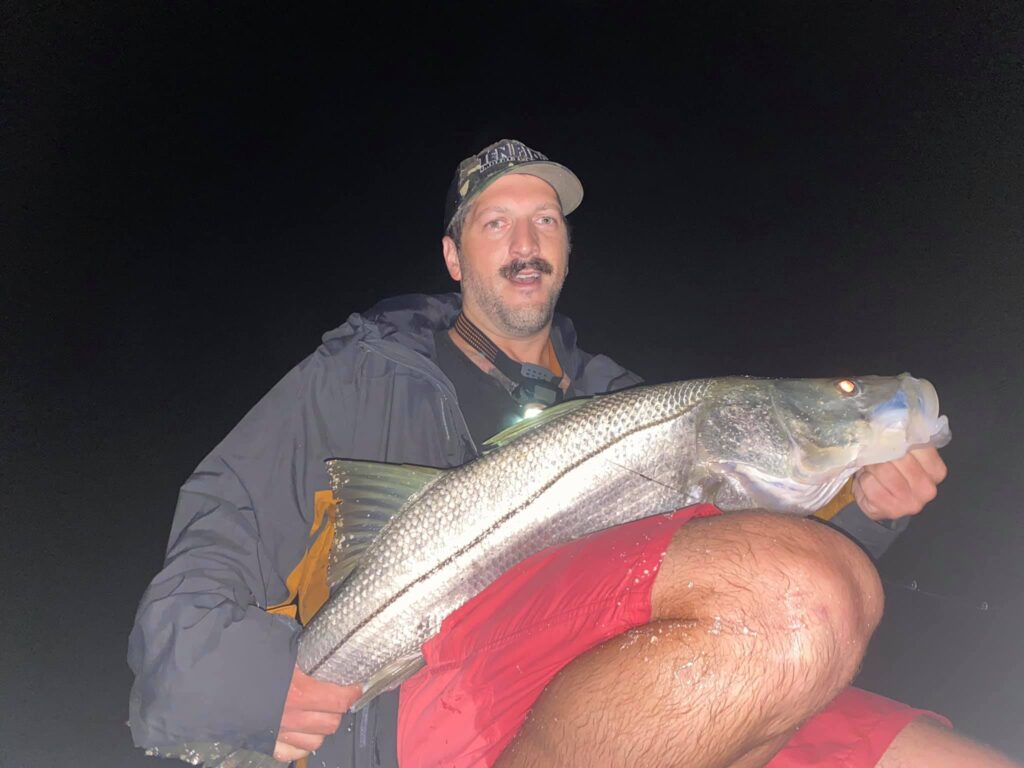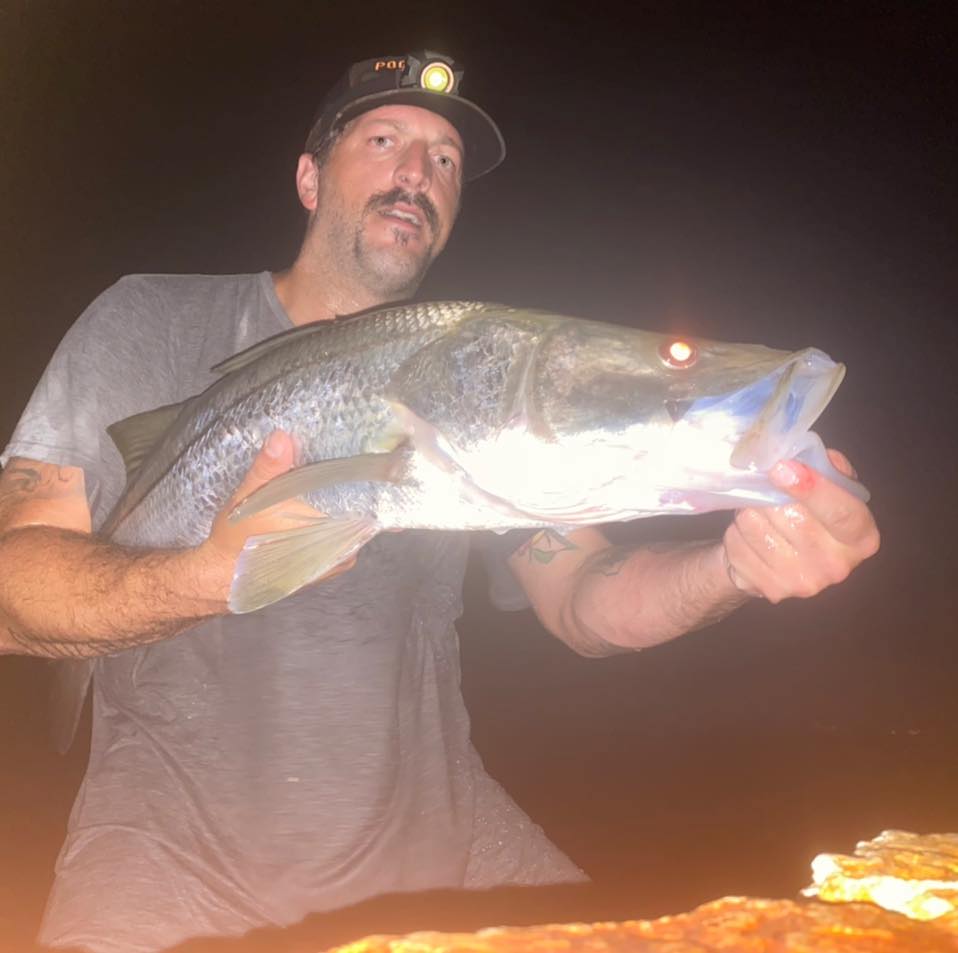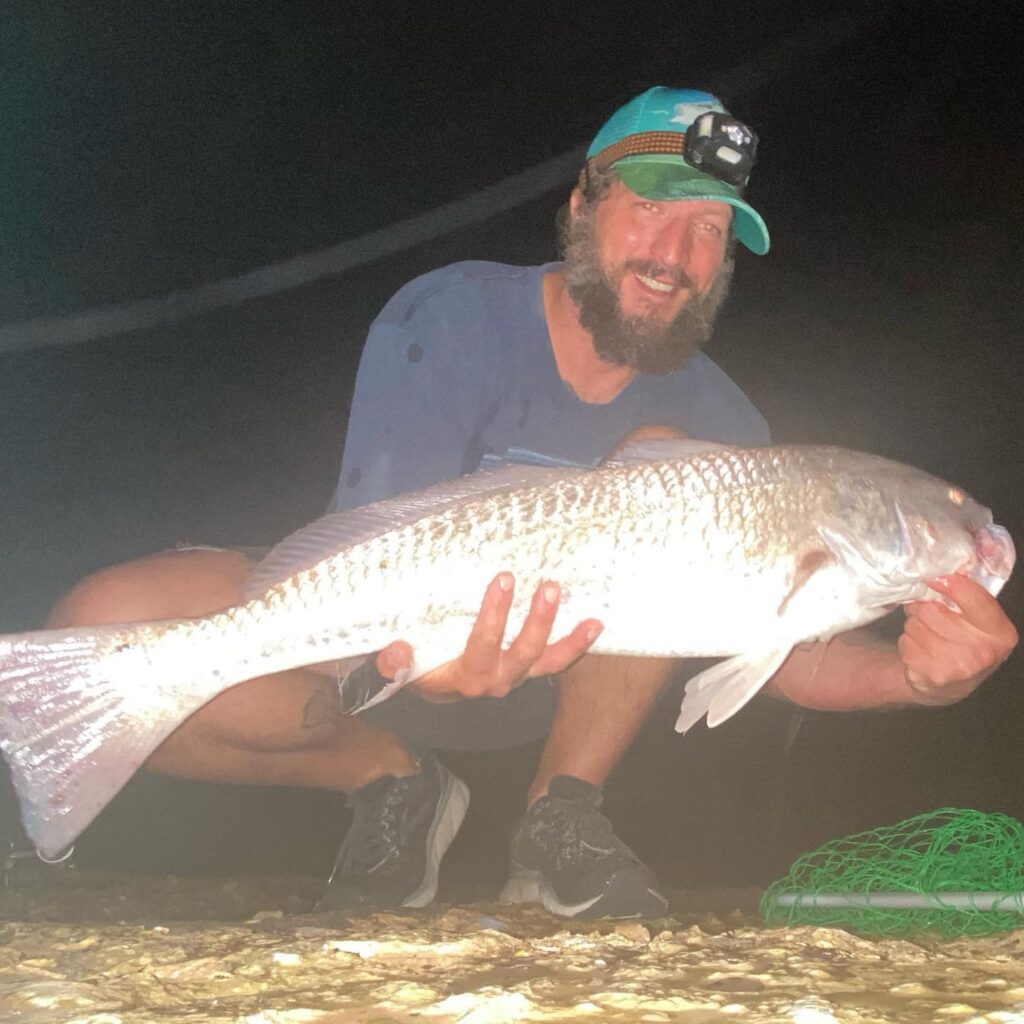Fishing point of rocks can be tricky, but extremely productive. The bottom is extremely rocky, lots of places fish hide are rocky and snag nearly any lure thrown out. Learning the tackle to use and how to work it without getting snagged is vital, as well as learning locations of the general channels (or “lines”) that fish tend to move through.
Parking
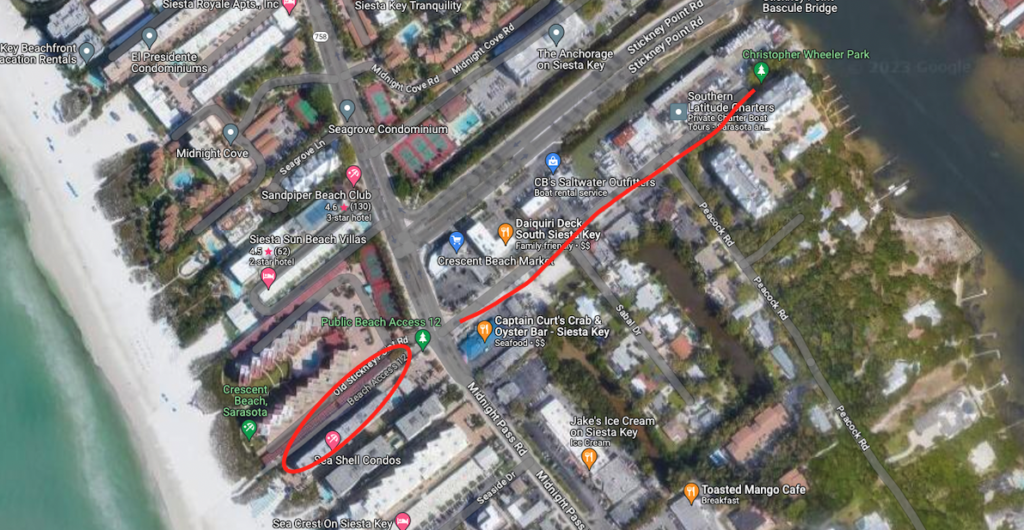
There is no free or street parking on Point of Rocks Rd. The best option is to park on the street just south of Stickney point or the crescent beach access, both marked in red in the picture above. The parking is full most of the day, but if you get there in the morning before 8am (or even 9am oftentimes) you can find a spot. At sunset, both of these parking areas start to clear out– convenient, since mid-day fishing isn’t very good out there anyway.

Access
WEAR SHOES… this is harsh ground for bare feet. I prefer crocs or Simms wading boots.
At low tide you can typically walk in the water around the sea wall to get to the north end of point of rocks. At higher tides, you can climb on the sea wall instead. While you do need to wrap around some protrusions on the seawall, it’s not too challenging if you are in modest shape.

The southern end known as “Sanderling” hosts a wonderful cove and shallow reef that can be absolutely loaded with fish depending on the season and weather. It can be reached by a short hike along the rocks or by just following closely to the sandier rock rabble. High tide can reach your upper thighs in spots here, so you will get wet. Pack and prepare accordingly.
Tackle
You will want a setup that can take a little abuse, as it can get rowdy out here. Your gear WILL get wet and possibly bang against some rocks a bit while hiking or fighting a big fish. Get a sealed saltwater reel. On the cheaper end, check out the Daiwa BG 3000 or 4000. I’ve also given my Penn Battle II 4000 a beating out there and its still going strong. Here are the rest of my recommendations:
- 30lb braid
- 40lb to 60lb leader, mono or fluorocarbon
- 7′ or 7′ 6″ rod for good casting distance
When it comes to picking artificials here, I have had more success with 4″ to 6″ swim baits than anything else. I greatly prefer the Live Target brand swim baits. They are the best swimming swimbaits out there, in my opinion, and their buoyancy let’s them sink slow and bounce off the rocks instead of getting snagged. They definitely still get snagged (I’ve lost my share!), but you can get a feel for them out there and avoid that after a while.

Top water plugs also work well when the water is fairly calm and the fish are hyper. I like a bone colored Heddon Super Spook or Zara Spook, personally.

All of these will catch fish as well:
- Small paddle tails
- Bucktail jigs (careful though, these snag easily)
- Rapala crankbaits (such as the X-Rap series)
Fishing The North End

Above I’ve marked the three main standing areas for fishing this end of point of rocks. The red arrows represent the direction and line to cast from those spots, targeting the channels that fish often move through.
- You can fish and do well from the sea wall without climbing around the rocks. The 3rd standing spot I have marked is a large rock with a crevice underneath it where big snook will sit and wait for bait to swim by. Throwing a line from the wall past that rock then bringing the lure back slowly is a pretty safe line and will often result in a nice snook.
- This is my favorite line to throw for a handful of reasons. You really get a nice clean pull past the attack crevice fish hide in. You can also work all over the little cove there where fish will come and hang out. I’ve caught big snook not 10 feet in front of me in that little hole in the middle of the night. You can also cast around the sea wall and the stairs off the end where fish will move past or just sit low and hide.
- Standing on the big rock here can let you cast out much further, to where the rocks drop off into deeper water. You can find nurse sharks there and tarpon can sometimes come up that close. You can also work the line that goes back to the sea wall. It gets really slippery out here, though– be wary of the many holes in the rock that are often hidden under a thin layer of water. They can trip you and cut you up pretty badly.
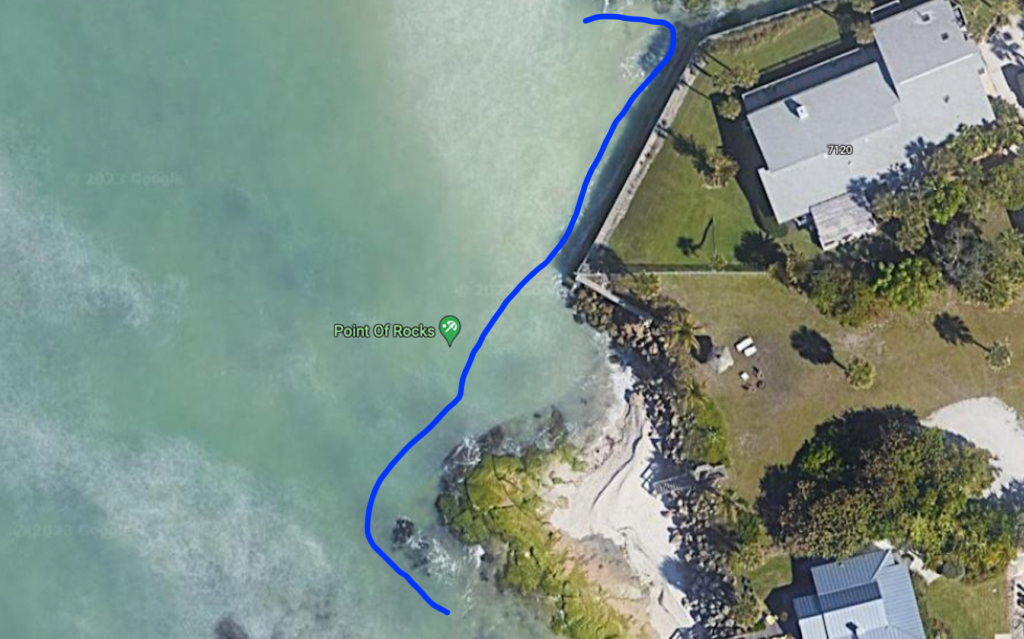
The fish typically swim along the blue line above when they’re actively moving to feed, rather than sitting still and waiting for bait to come by. Fishing this line by soaking a live or cut bait can result in a big red or snook.
Here are some fish I’ve caught at the north end of Point of Rocks.
Fishing The South End
There is a sea wall at the south end that you could formerly use as a base to set up your gear, drop your bags and extra rods, and fish from. But as of 2023, the old house there has been bought and they’ve hired security to kick people off it. So, you must stay on the rocks below now, which is a bit of a pain at higher tides. However, the area is still very fishable if you’ve got the motivation.
I’ve caught the vast majority of my big Point of Rocks fish down here. It’s less accessible and not many people fish it. It requires some umph and willpower to really put in a session out there, but can be extremely rewarding.
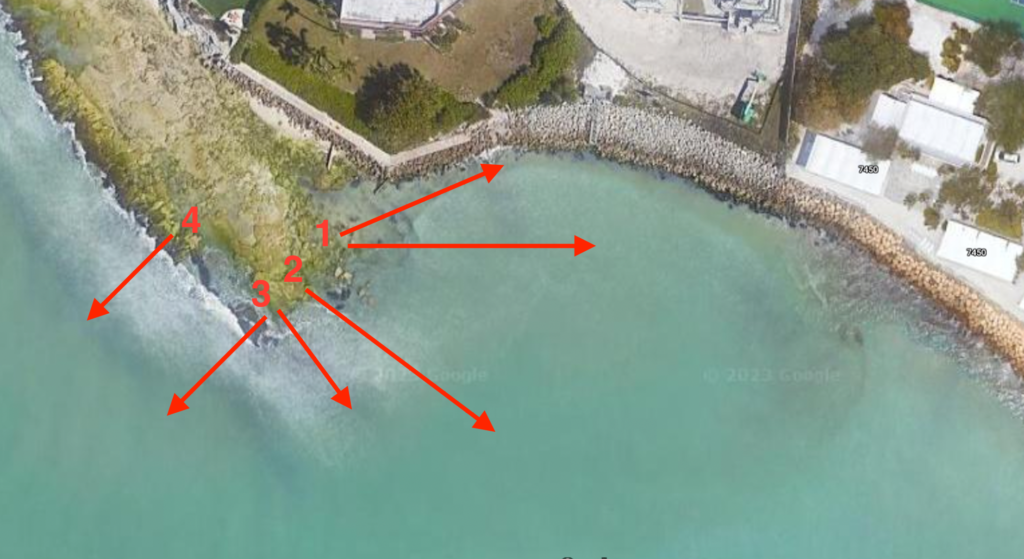
- Fish swim all up against this rock wall on the north side when the tide is coming in. When the tide is turning from outgoing to incoming, they will line up on these rocks and sit there, waiting for bait to start flooding in. Working these lines can be extremely productive when the fish are eating.
- This is always my first stop when I get here. There are often a couple of big fish just sitting and hanging out in this line, and I’ll get something on the first or second cast.
- This is a sketchy spot to stand, but not too bad but once you get a feel for it. Just be careful and take your time learning where the rocks are solid. Casting southeast can be a snook fest, as they will school up there just hammering bait.
- When everything else is slow, you can throw from here out to a much deeper drop off and work the bait inwards. I’ve connected with some absolute monsters out there, including some massive tarpon.
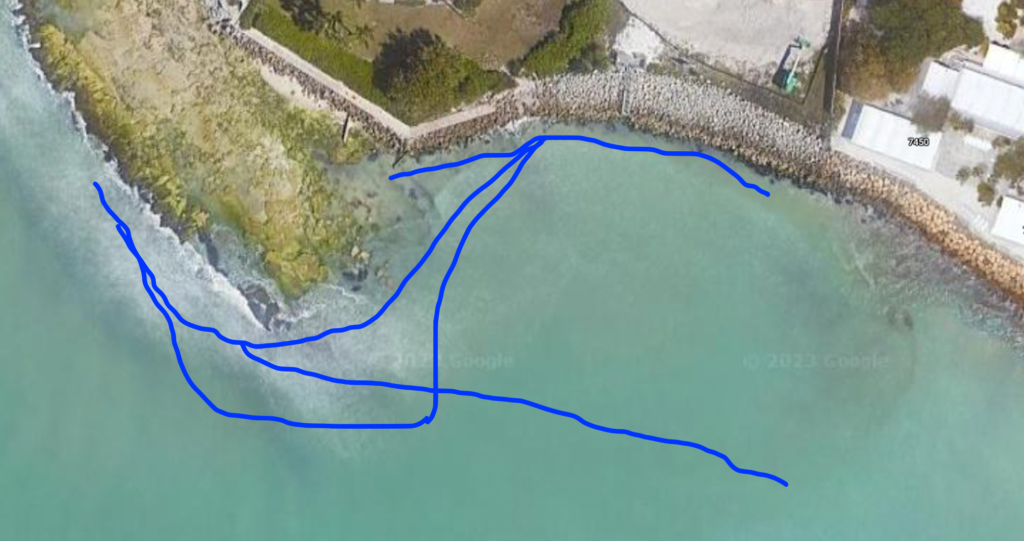
The lines above represent the paths I’ve watched fish swim consistently. I’ve seen 100 snook school through the lines against the rocks in the summer.
Some fish I’ve caught at the south end:
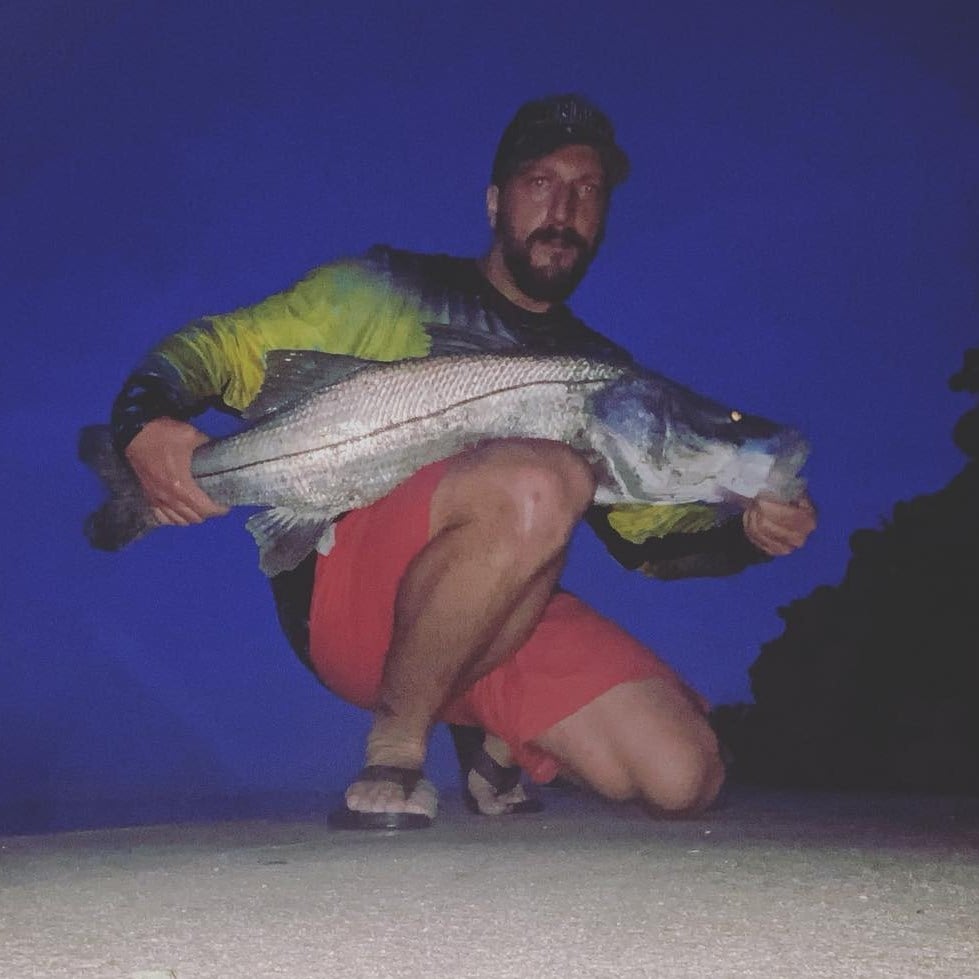
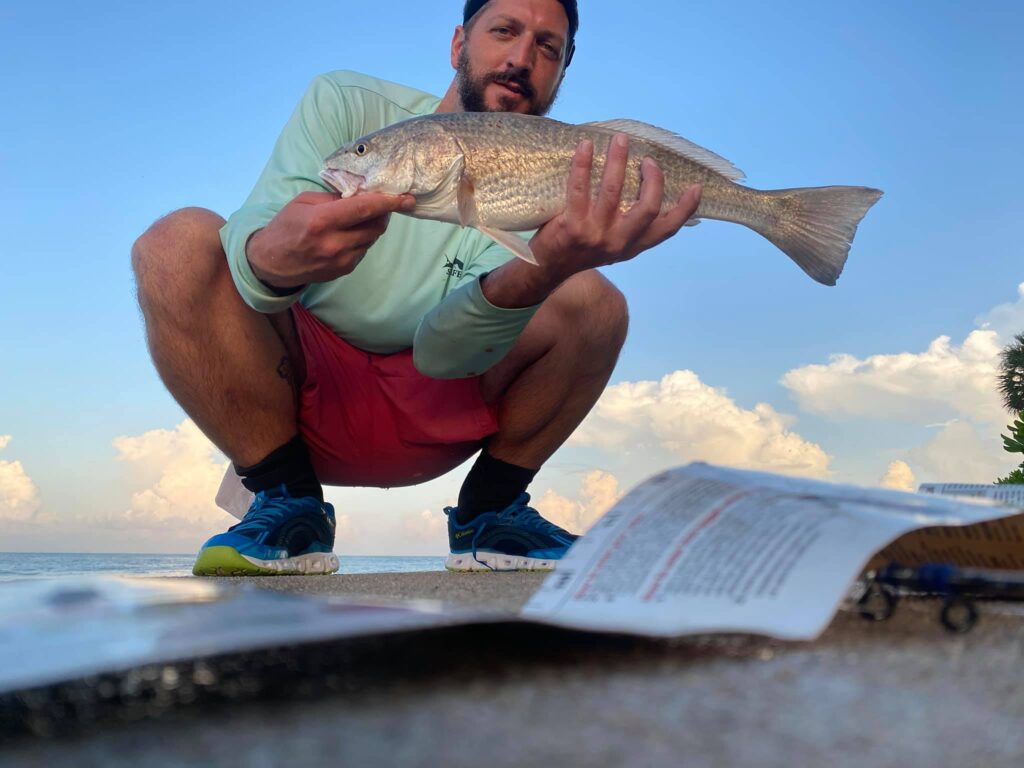
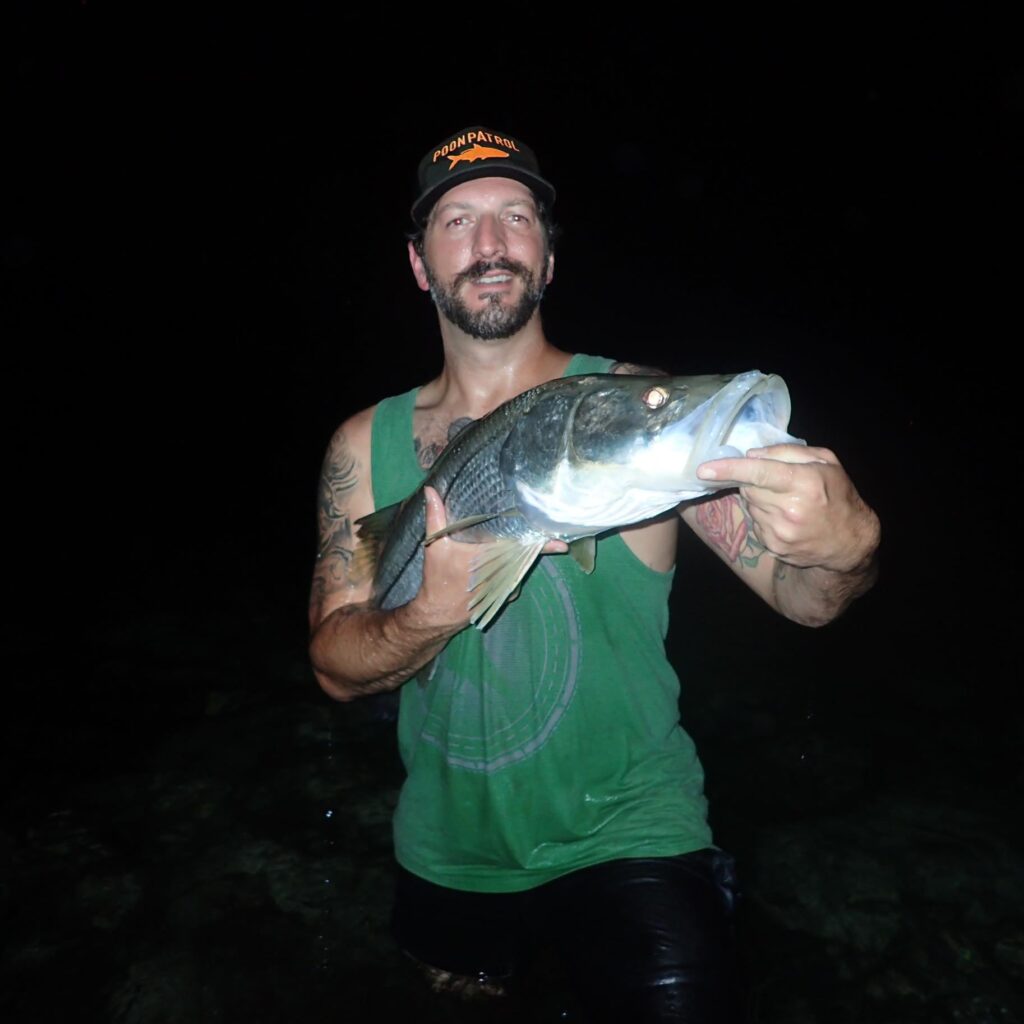
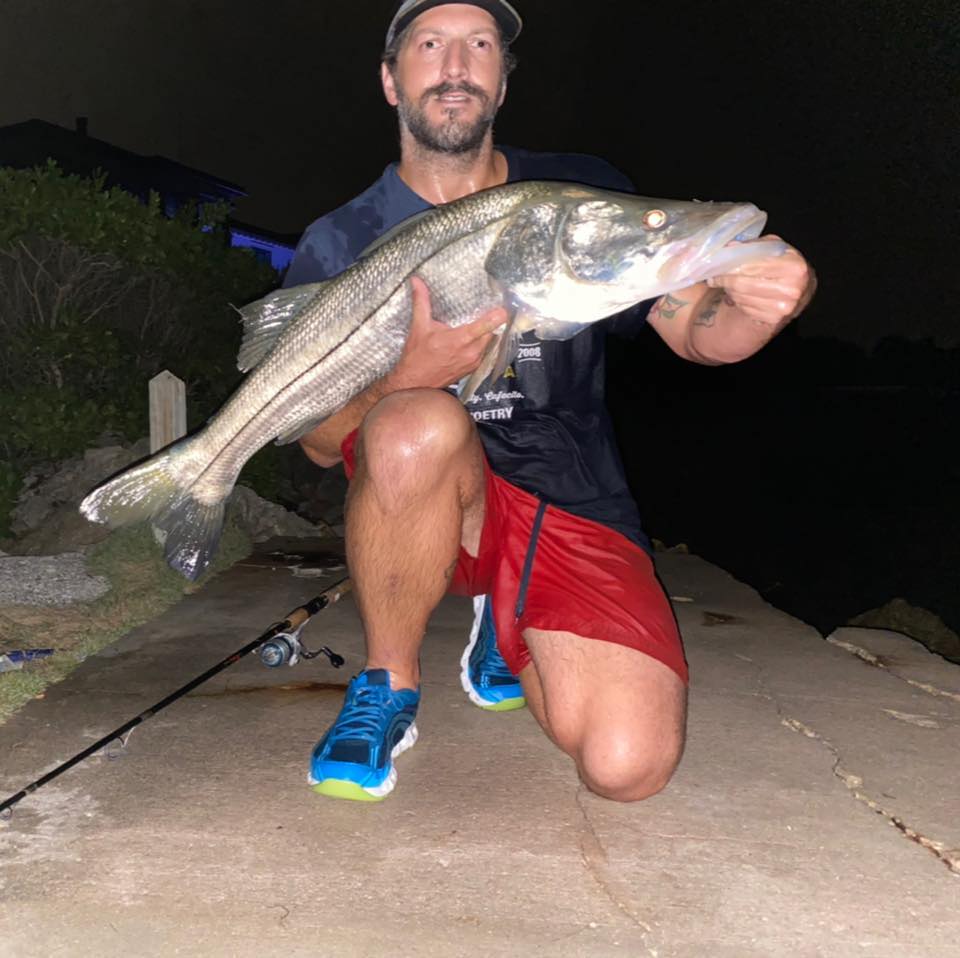
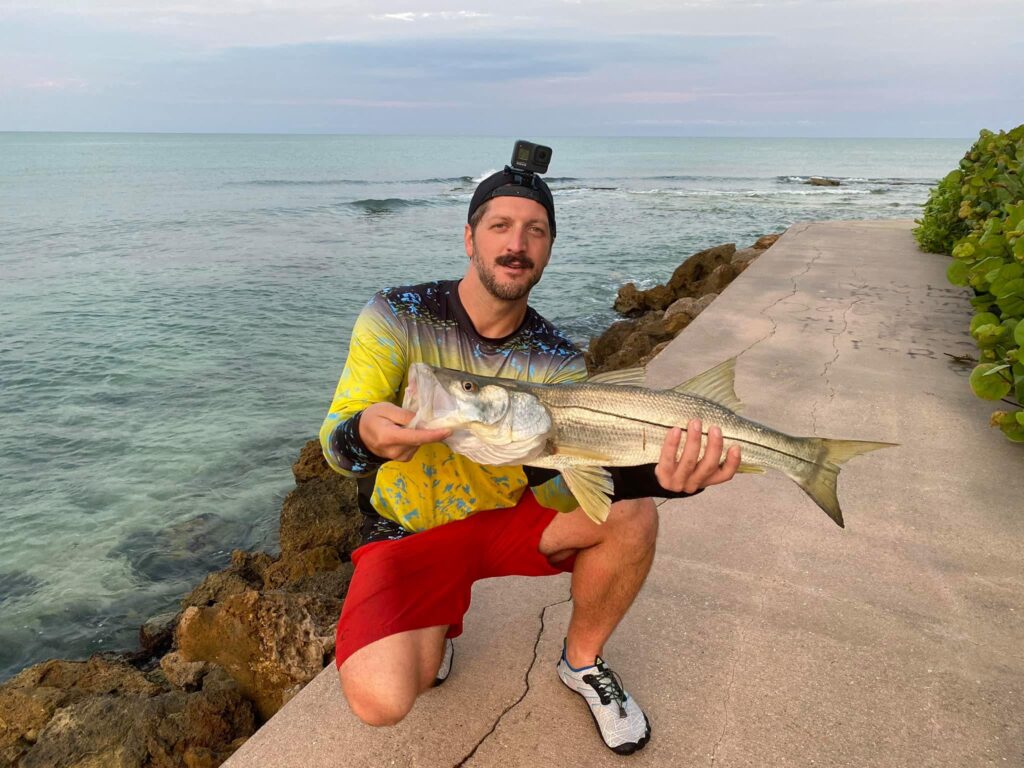
Fly Fishing
I’m still fairly new to fly fishing, but I’ve done well out here. I work the rocks that you can’t really work with a normal lure between the North & South end.
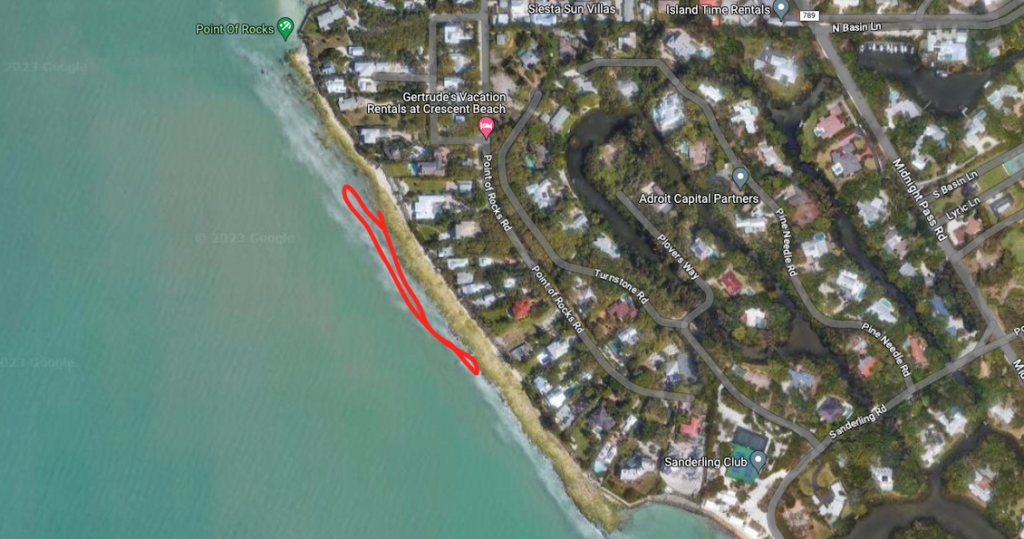
I’ve caught all my snook out there on green clousers like this one:

Tips
- Fish at sunset/night or pre-sunrise/sunrise. I’ve caught more snook over 38″ when its completely dark out than any other time. They can sense the lure’s movement in the dark and strike hard.
- If the water is wavy/choppy, the fish are still eating, sometimes harder. Don’t let it deter you.
- If you have the ability to carry a landing net with you, do it. I’ve lost some nice fish there trying to land them by hand while keeping balance on the rocks.
- If you think you are working your lure slow enough, you aren’t. Work it slower, trying to let it get as close to bottom as you can without snagging rocks.
